
5 minute read
Something to Talk About
Written by Leigh Hendry and Gloria Houghland / Photography by Allen Clark
The exterior front wall of the strikingly modern home, on a prominent street within strolling distance of the venerable Belle Meade Country Club, could well be described as the tony enclave’s most elegant and inspired outdoor canvas. That assessment depends, however, upon one’s particular point-of-view, of course.
The site-specific commissions of cutting-edge street art which have graced this residence during the past several years have certainly altered the trajectory of many Belle Meade cocktail party conversations. Rare is the Music City soul who hasn’t either Googled, lavishly discussed, or purposely done dozens of drivebys of the Kohlers’ brick contemporary, situated incongruously among a plethora of ultra-traditional mansions.
From the owners’ perspective, though, the house actually has more similarities to its neighbors’ than it does differences. These are referenced with an updated, modern architectural approach: the residence employs asymmetrical design, sports white painted brick, has two Zen-influenced courtyards, an abundance of large vertical windows, and a profusion of square pillars as well as an ample green space accentuated by an impeccable tree border.

Regardless, strains of the lyrics from singer/songwriter Bonnie Raitt’s 1991 hit, “Something to Talk About,” still seem to bounce throughout the neighborhood air space on a continuing basis. With Nashville currently at the apex of the nation’s “IT City” trend, it’s not unexpected then that two Big City transplants would unwittingly earn the “disruptor” title as the radical transformers of this comfortably contented community’s architectural and artistic landscape.
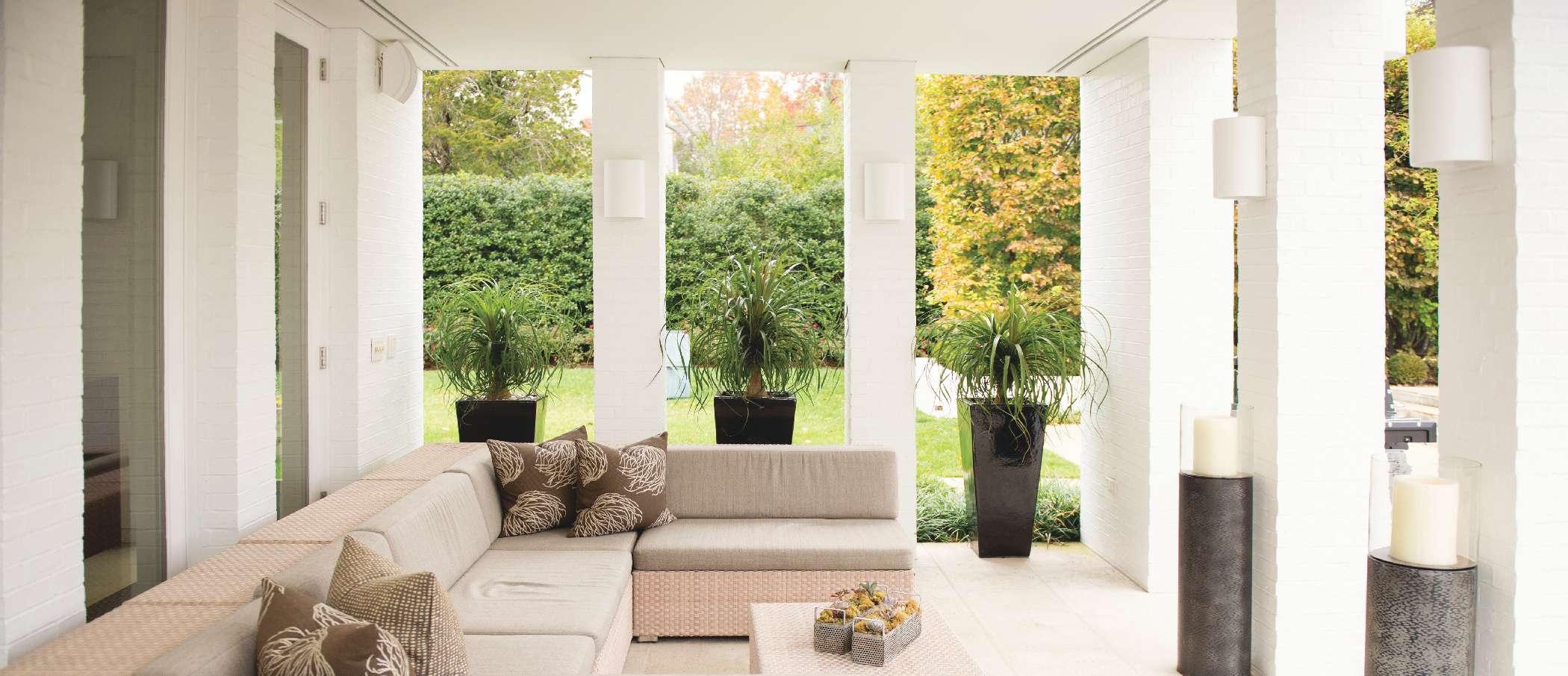
When London investment banking lawyer Louise Kaufman met Wilko Group President and co-founder Neil Kohler, she says she knew in the first heart-stopping moment that “he was a man worth moving continents for.” She openly reveals this confidence with a laugh while slicing picture-perfect organic vegetables on the honed black granite countertop in her sleekly polished, Italian Poliform kitchen. This Larry Woodson/Leila Gilchrist-designed (Woodson Gilchrist Architects, Nashville) residence, where Louise and Neil are now happily ensconced with their three children, sprung forth on the former site of a Herbert Rodgers-decorated home which the couple regrettably found, much to their chagrin, could not be efficiently rebuilt.
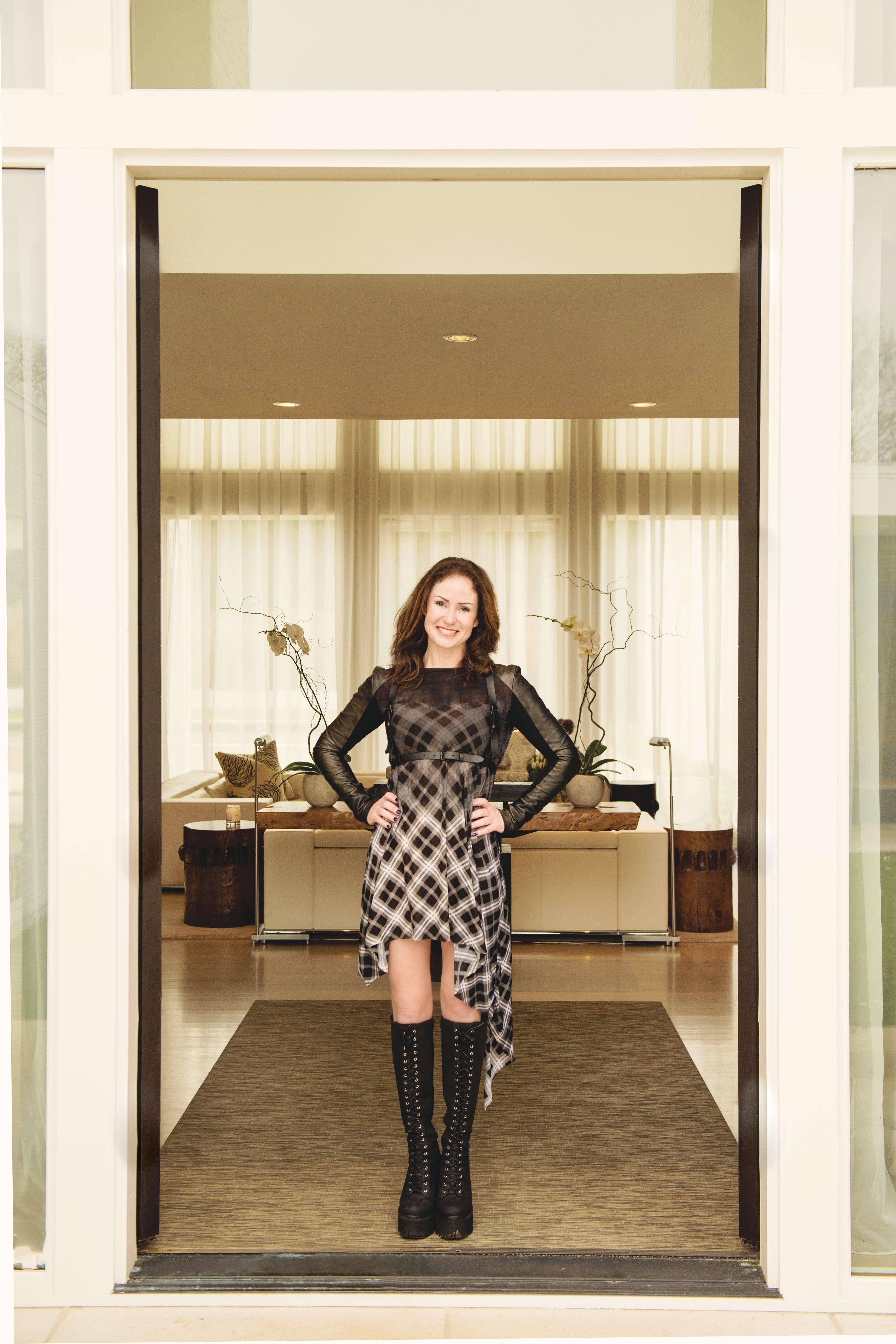

These devotees of design excellence instinctively knew that the house which they envisioned required a seamless inside/ outside flow with a swimming pool as its centerpiece; their design brief for their future “home team” was indoor/outdoor living fused with casual entertaining.
Fortuitously, during a chat with builder Mike Hudson at a party, he convinced them to depart immediately for a quick look at friend Woodson’s home. That impromptu visit initiated an en-gaging partnership between the homeowners, the builder, the architect, landscape architect and interior designer, which culminated with a show-stopping, fnal “product” 18 months after groundbreaking. The resulting structure, created using an extraordinarily simple, unpretentious design plan, possesses precisely the relaxed family vibe which the Kohlers sought. With the exception of its massive customdesigned and built wooden front door, many of the home’s 18 doors are often left invitingly open to the elements.

In keeping with the overall minimalist approach, designer Katy Chudacof intentionally held the interior elements in check as she cautioned against an overload of the requisite “sparkly” surfaces that are so ubiquitous in modern interiors while Woodson counseled that a home “doesn’t need too many moves; choose your perfection.” The soft gray walls throughout each room, complemented by white oak floors stained to a perfect driftwood gray, lend a sculptural overtone to the interior mix. The dining room features a piece entitled, “Wing,” by Memphis artist Pinkney Herbert, along with a very refined Armani dining table.

Other works highlighting the interior spaces include a Kelly Viz classic still life and a John Welles Bartlett block print. The artwork has been limited to a few select pieces so as not to infringe upon the ultimate purity of the statement which the house and landscaping make as a unified whole. Keep in mind that even during the final design phase of the interior, the exterior art wall concept had still yet to come to the fore.
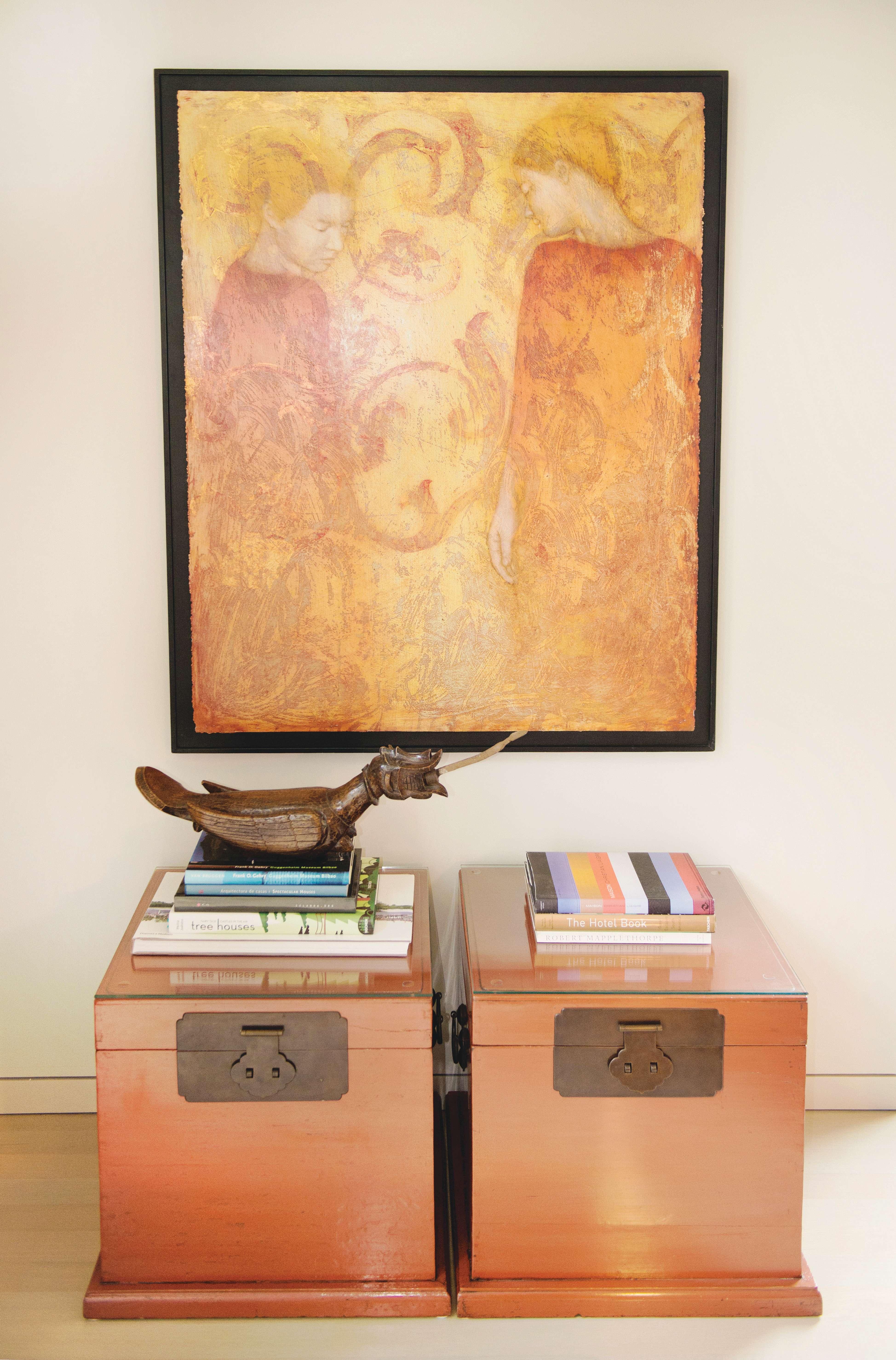
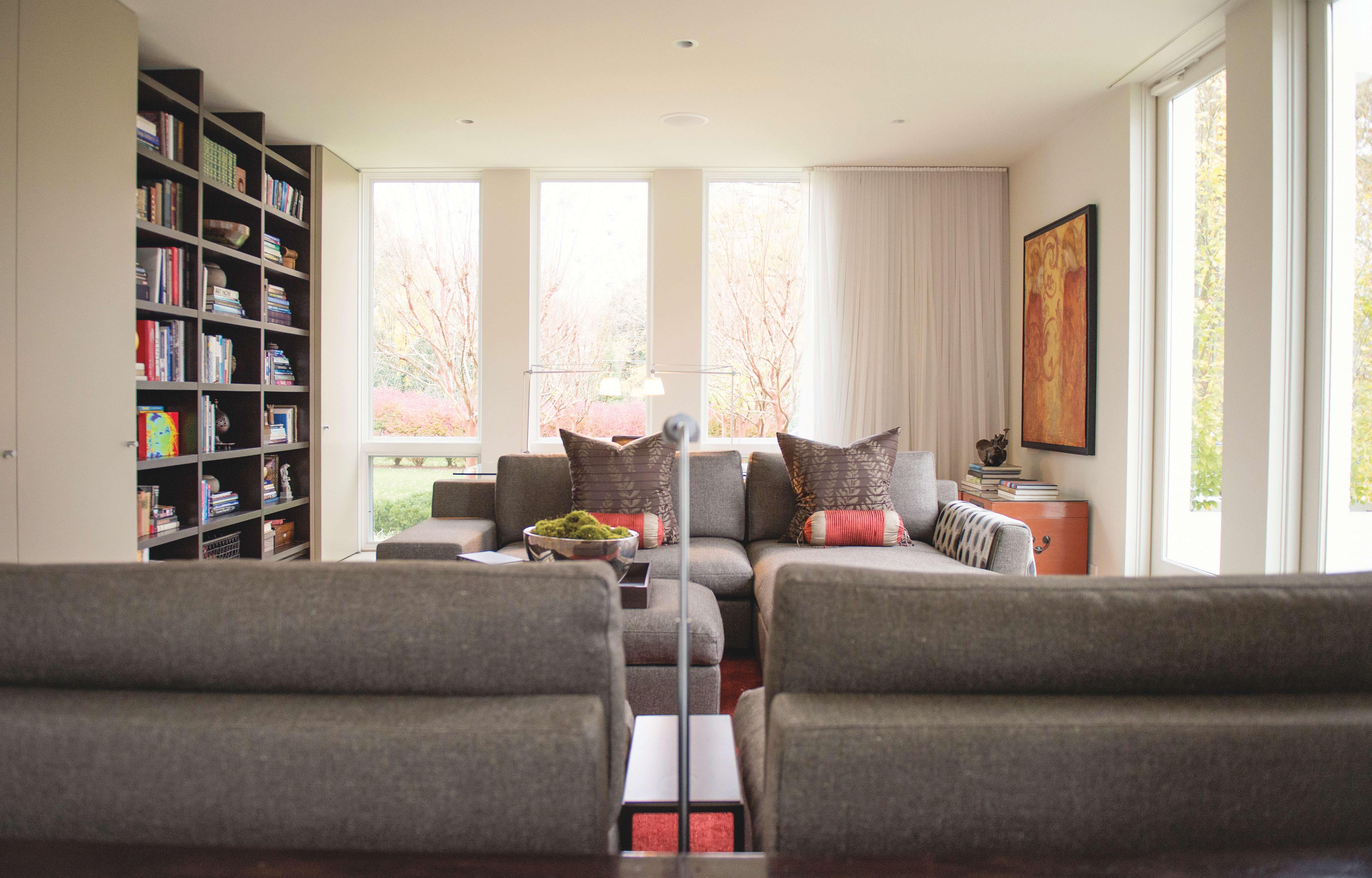
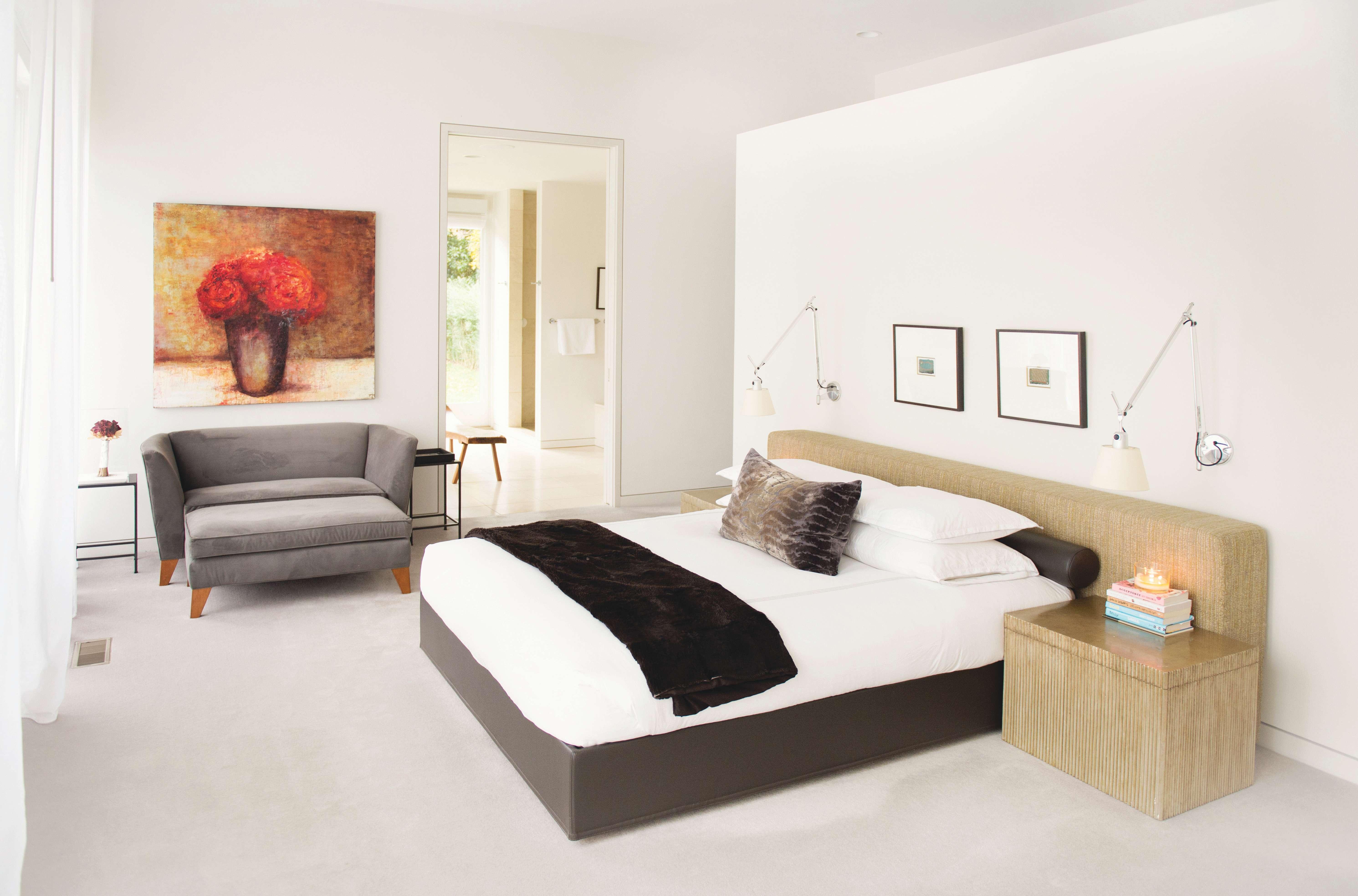

Fast forward to the moment when the final coat of white paint was applied to the brick exterior, and suddenly it seemed like “such a fun place to project art,” explains Louise with a twinkle in her eyes. Specifically, she initially wanted to commission an art project for the holiday season as a gift to the community. But, because her original idea was determined to be “too technical” to actually execute, the Kohlers opted instead, with the assistance of the University of the South at Sewanee art professor Greg Pond, to project a pair of red cardinals, entitled Pattern Recognition, onto the exterior.

The enthusiastic reception was both encouraging and rewarding. As advocates of all forms of visual art, the owners felt it would be a stimulating challenge to transition from projection art to street art, thereby exposing family, friends, walkers, joggers, and drivers to that emerging medium. The frst aerosol mural, created by Oregon artists Jef Jacobson and Joe Nix in the spring of 2012, was a bright psychedelic piece entitled, “Gateway.” It had a shelf life of four months before the couple was ready to segue into a fresh piece. After engaging Jacobson and Nix again, they encouraged the pair to select the wall of their choice - even the interior walls were not of limits - for Round Two. They were surprised, though, when the artists chose the same surface for a new, hyperrealistic creation they dubbed “Timeline.” This one had a longer lifespan.
When the Kohlers’ decided it was time for the third work, it occurred to them that they had inadvertently created an outdoor space. By this time, they were receiving unsolicited suggestions regarding the space but decided to be even more deliberate in their approach; they went global. “Neil is the passionate one but I became the editor. I realized this needed to be very, very good,” Louise said. “These artists don’t have agents, so it is difficult to track them down. There is no organized structure. As a lawyer, I realized I had met my match.”

